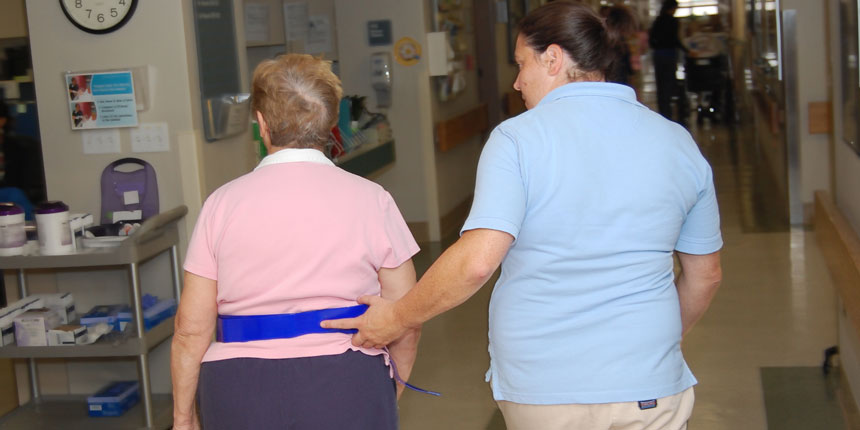Health+
25 Years of Southeast Rehab

Celebrating a quarter century of helping to restore lives
Southeast Rehabilitation Center is marking 25 years of helping patients achieve a more independent lifestyle, as the only facility of its kind in the region.
“The center is the only inpatient rehabilitation facility in Southeastern Massachusetts that is located within an acute care hospital,” said Janice Romagnolo, Vice President, Post-Acute Care Services, of Southeast Rehabilitation Center, which is located at Charlton Memorial Hospital.
Susan Lemieux, RN, BSN, CRRN, Nurse Manager, is one of several nurses who have worked at the center since it first opened its doors. Lemieux said many of the center’s patients have suffered strokes, but staff also work with cardiac surgery patients, amputees, burn and trauma victims, those with fractured hips or neurological disorders, and many other conditions.
“Our goal is to send them back to their home to be as independent as possible,” Lemieux said, noting that the average stay at the 23-bed center is about 14 days.
The biggest change since the center’s inception is the advancement of technology, Lemieux said. “When we first started, we were just starting to go to computers,” she said. “Now, there are so many new treatment modalities that the therapists use.”
Among them, VitalStim therapy, a neuromuscular electrical stimulation treatment for patients who have difficulty swallowing; and Bioness, a functional neuromuscular stimulator for stroke patients to improve paralysis.
“We’re using a lot more technology in the field of speech and language therapy,” said Beatriz Mimoso, MA CCC-SLP, Speech Pathologist/Rehab Team Leader, who has also worked at the center since its inception. “There has been constant change throughout the 25 years — changes in patient populations, the types of diagnoses we see, changes in equipment and technology — and that’s one of the reasons I continue to work on this unit. It’s never stagnant.”
In addition to cutting-edge technology, the center utilizes every-day technological advances that are familiar to residents — such as iPads.
“We use an iPad to work with patients during language therapy,” Mimoso said. “The younger population loves using the iPad to do their therapy programs, as opposed to using the traditional flash cards. We work with a variety of age groups, and the patients really love it.”
The center works closely with the cardiac program at Charlton, allowing patients who have had heart surgery to easily transition to the on-site rehabilitation center.
“It’s good for the patients and family to know that they are right there where their surgeon is, and we carefully monitor them while they are going through their rehab,” Lemieux said.
Maureen Rogers, Health Unit Coordinator, has also been with the center for 25 years, and plays a key role in coordinating and facilitating tests and appointments for patients. She appreciates the interdisciplinary approach at the center. “It’s a total team effort,” Rogers said. “The staff isn’t just looking at one health problem — they are looking at the patient as a whole. Everything is taken into account.”
Patients receive three hours of therapy daily, and the team includes physiatrists (physicians who specialize in rehab medicine), nurses, physical therapists, nurse practitioners, occupational therapists, social workers, speech pathologists, case managers, dietitians, and other specialists as needed.
The center’s Medical Director and Physiatrist, John Magnotta, MD, is Board Certified in Physical Medicine and Rehabilitation. (See his profile.) He and other physicians visit the unit daily to help manage patients medically. “That’s another benefit of being located within the hospital,” Romagnolo said.
The staff has weekly team meetings. “The team gets together as a whole to discuss how each patient is doing, what their barriers are to going home, and what we can do to break down those barriers and set a discharge plan,” Lemieux said. Rogers said the unit also facilitates the process of getting patients any medical equipment that may make their life easier when they return home, such as walkers or chairs.
“We work together as a multidisciplinary team to look at the patient as a whole and provide the best care we can, all focusing on one discharge goal for the patient,” Mimoso added.
“As a clinician, I love working with patients and seeing them progress,” Mimoso said. “Patients who come to us can’t swallow or communicate. When they leave, they are able to eat. It may be a modified diet – but they are eating, and are able to communicate and express basic wants and needs. At the end of the day, that’s what I come to work for.”
